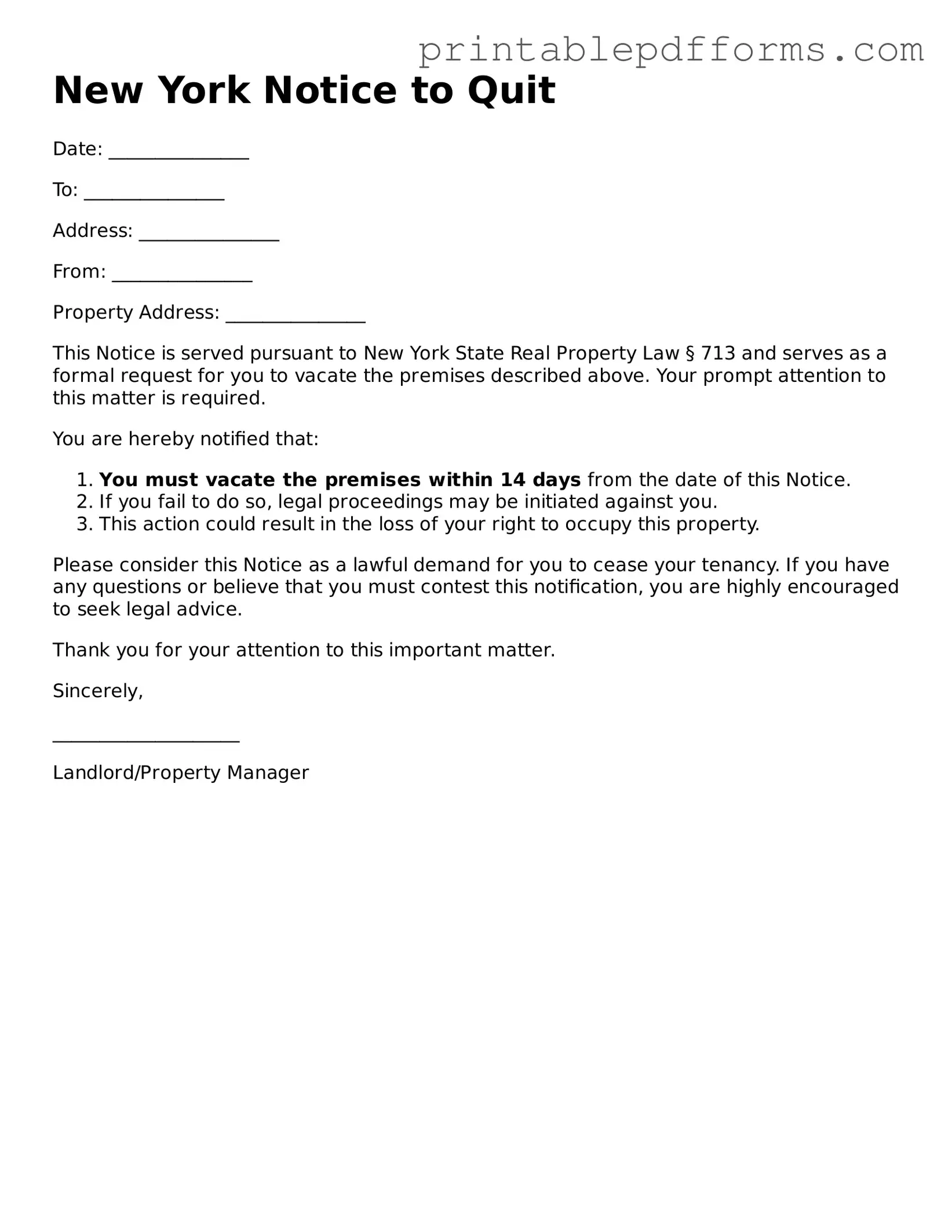What is a Notice to Quit in New York?
A Notice to Quit is a formal document that a landlord uses to notify a tenant that they must vacate the rental property. This notice is typically issued when the tenant has violated the lease agreement, failed to pay rent, or engaged in unlawful activities. It serves as a legal warning and begins the eviction process if the tenant does not comply.
How long does a tenant have to respond to a Notice to Quit?
The response time depends on the reason for the notice. Generally, tenants have:
-
14 days to pay rent if the notice is for non-payment.
-
10 days to respond if the notice is for a lease violation.
-
30 days for other reasons, such as termination of a month-to-month lease.
It is essential for tenants to act promptly to avoid further legal action.
Can a tenant dispute a Notice to Quit?
Yes, tenants have the right to dispute a Notice to Quit. If a tenant believes the notice is unjust or that they have not violated the lease terms, they can respond in writing to the landlord. Additionally, they may choose to seek legal advice or representation to assist in resolving the issue.
What happens if a tenant ignores the Notice to Quit?
If a tenant ignores the Notice to Quit, the landlord may proceed with the eviction process. This typically involves filing a lawsuit in housing court. Ignoring the notice can lead to a judgment against the tenant, resulting in eviction and potential damage to their rental history.
Is a Notice to Quit the same as an eviction notice?
No, a Notice to Quit is not the same as an eviction notice. The Notice to Quit is a preliminary step that informs the tenant of the need to vacate the premises. An eviction notice is issued after the landlord has taken legal action and obtained a court order for eviction. The eviction notice is the final step in the process.
Does a Notice to Quit need to be served in person?
A Notice to Quit can be served in several ways, including:
-
Handing it directly to the tenant.
-
Leaving it at the tenant's residence with someone of suitable age.
-
Mailing it to the tenant’s last known address.
It is important for landlords to keep a record of how the notice was served to ensure compliance with legal requirements.
Are there any specific requirements for a Notice to Quit in New York?
Yes, a Notice to Quit must include specific information, such as:
-
The date of the notice.
-
The tenant's name and address.
-
The reason for the notice.
-
The date by which the tenant must vacate.
Ensuring that all necessary information is included helps prevent delays and complications in the eviction process.
